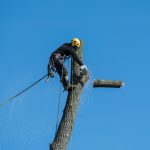Essential Principles for Drought-Resilient Landscaping in Brighton
Understanding Brighton’s unique climate is crucial for effective drought-resistant landscaping. The city experiences periods of low rainfall and sandy soils, which challenge traditional gardening methods. To combat this, sustainable gardening practices emphasize water conservation and plant selection suited to Brighton’s environment.
The benefits of drought-resilient landscapes extend beyond saving water. Homeowners enjoy lower water bills, reduced maintenance, and healthier plants that thrive in dry conditions. Communities benefit from improved biodiversity and decreased strain on municipal water supplies.
Also to see : Essential strategies for safely managing asbestos during your hull home renovation
Core design concepts for water-wise gardens include zoning plants by water needs, incorporating soil improvement techniques, and using mulch to limit evaporation. These principles support a sustainable gardening approach that aligns with Brighton’s environmental conditions. By prioritizing these elements, gardeners can create landscapes that endure drought stress while maintaining aesthetic appeal and functionality.
Selecting Drought-Tolerant Plants Suited to Brighton
Brighton gardening thrives when drought-tolerant plants are carefully chosen to match local conditions. Native species such as lavender, rockrose, and sea thrift excel as they have naturally adapted to Brighton’s sandy soils and periodic dry spells. These plants require less supplemental watering, fitting perfectly into sustainable gardening approaches.
Have you seen this : Exploring cornwall’s countryside: your complete guide to homes with superior public transport links
Why choose native or well-adapted plants? Primarily, they develop deep root systems that enhance drought resistance and support soil health. Furthermore, they attract local pollinators, boosting biodiversity. Using these species reduces maintenance demands and water consumption, creating a more resilient garden.
Seasonal planting strategies also matter. For instance, planting drought-resilient perennials in early spring allows roots to establish before the dry summer months. Introducing a mix of flowering times ensures year-round interest and continuous ground coverage, protecting soil moisture.
Incorporating shrubs that store water and grasses with fibrous roots can further enhance water-wise garden design. With Brighton plant selection centred on natives and drought-tolerant varieties, gardeners can build landscapes that are both robust and visually appealing. This balanced choice fosters long-term sustainability and thriving plant health under Brighton’s climate challenges.
Water-Efficient Irrigation and Maintenance Techniques
Brighton gardening benefits greatly from water-saving irrigation strategies designed to minimize waste while nurturing drought-tolerant plants. Among the most effective methods are drip systems, which deliver water directly to plant roots, reducing evaporation and runoff. These systems can be paired with smart controllers that adjust watering schedules based on weather or soil moisture, optimizing efficiency.
Mulching plays a key role in efficient garden watering by insulating soil and retaining moisture. Organic mulches like bark or compost slow evaporation and improve soil health simultaneously. Groundcovers act similarly, shading soil and decreasing water loss. Applying a 2-3 inch layer of mulch around plants is a practical way to sustain soil moisture in Brighton’s often sandy soils.
Routine maintenance also impacts water use. Regularly checking irrigation lines ensures there are no leaks or clogs that waste water. Removing weeds lessens competition for limited moisture, while periodic soil aeration helps water penetrate deeply, supporting root growth. These combined practices create a sustainable watering routine that preserves Brighton’s precious water resources without compromising plant vitality.
Soil Improvement and Mulching for Drought Resistance
Enhancing soil health is foundational for creating drought-proof gardens in Brighton. Sandy soils common here drain quickly, making moisture retention challenging. Incorporating organic matter such as compost increases water-holding capacity, nutrients, and microbial activity crucial for plant resilience. Regular composting practices recycle garden waste into valuable soil amendments, reducing dependency on chemical fertilizers while promoting sustainable gardening.
Mulching further supports soil moisture conservation by limiting evaporation and moderating soil temperature. In Brighton gardening, organic mulches like shredded bark or leaf mold are preferred for their ability to improve soil structure as they decompose. Applying a 2-3 inch layer around plants acts as a protective blanket, reducing water loss and suppressing weeds that compete for scarce moisture.
Ongoing soil care involves periodic aeration to alleviate compaction typical of water-stressed soils, allowing deeper root growth and better water infiltration. Avoiding frequent tilling helps maintain soil integrity and microbial communities, essential for a healthy drought-resistant ecosystem. Together, these soil improvement and mulching techniques sustain Brighton’s drought-resilient landscapes, promoting vigorous plant growth while efficiently managing water resources.
Sustainable Design Features and Landscape Inspiration
Brighton’s sustainable landscaping encourages smart use of natural resources while enhancing garden appeal. Incorporating permeable hardscapes such as gravel paths or porous pavers reduces runoff, allowing rainwater to infiltrate the soil instead of overwhelming drains. This supports natural water cycles and limits erosion.
Rainwater harvesting systems collect and store rainfall for garden use, greatly reducing reliance on mains water. Even simple rain barrels can supply water for irrigation during dry spells, aligning with Brighton garden design goals to conserve water and build resilient landscapes.
Bioswales are another eco-friendly garden feature that Brighton gardeners can adopt. These shallow, vegetated channels capture and filter stormwater, improving water quality and reducing flooding risks. Bioswales also create habitats for beneficial insects and add visual interest.
When planning, intentional layout and spatial planning optimize water use and aesthetics. Grouping plants by water needs, positioning shade trees effectively, and balancing hardscape with softscape elements supports sustainability while producing vibrant, drought-resistant gardens.
By integrating these sustainable design features, Brighton gardeners create landscapes that are both beautiful and resource-efficient, demonstrating how elegance and environmental care go hand in hand.
Navigating Local Resources and Landscaping Regulations
Brighton gardeners must navigate local landscaping regulations to ensure water-wise practices comply with city guidelines. The Brighton council landscaping rules emphasize reduced water use and native plant incorporation to promote sustainability. Adhering to these regulations helps protect community water supplies while encouraging drought-resistant landscaping.
Homeowners can access numerous local gardening support resources. Brighton offers plant nurseries specialising in native and drought-tolerant species, providing expert advice tailored to regional conditions. Community garden groups and workshops also foster knowledge sharing about sustainable gardening techniques suitable for Brighton.
Regarding water management, Brighton has explicit water use guidelines aimed at conserving this precious resource during dry periods. These include restrictions on irrigation times and promoting efficient technologies like drip systems. Such measures ensure responsible water stewardship while maintaining healthy gardens.
Utilizing local resources and understanding regulations empowers gardeners to design drought-resilient landscapes effectively. Being informed of Brighton council landscaping rules and tapping into community expertise enhances success in creating sustainable, water-efficient gardens that thrive in Brighton’s unique environment.
Essential Principles for Drought-Resilient Landscaping in Brighton
Brighton’s climate, marked by sandy soils and long dry periods, demands tailored drought-resistant landscaping strategies. Understanding these challenges is key for successful Brighton gardening. Low rainfall leads to rapid soil moisture loss, stressing plants and requiring thoughtful design to conserve water and maintain plant health.
The benefits of implementing drought-resistant landscaping are significant. Homeowners experience reduced water bills and less garden upkeep. At a community level, such landscaping decreases demand on local water supplies and supports biodiversity by providing habitats for native wildlife.
Core principles for sustainable gardening in Brighton include zoning plants by water needs, improving soil with organic matter, and using mulch to reduce evaporation. These practices help maintain soil moisture and create resilient landscapes that withstand drought. Incorporating native species and planning layouts that optimize shading and wind protection further enhance garden longevity.
By focusing on these essential principles, gardeners can confidently create beautiful, functional, and sustainable gardening spaces that flourish despite Brighton’s water challenges.










